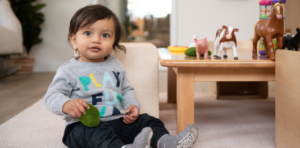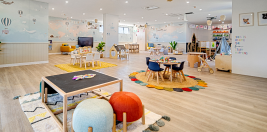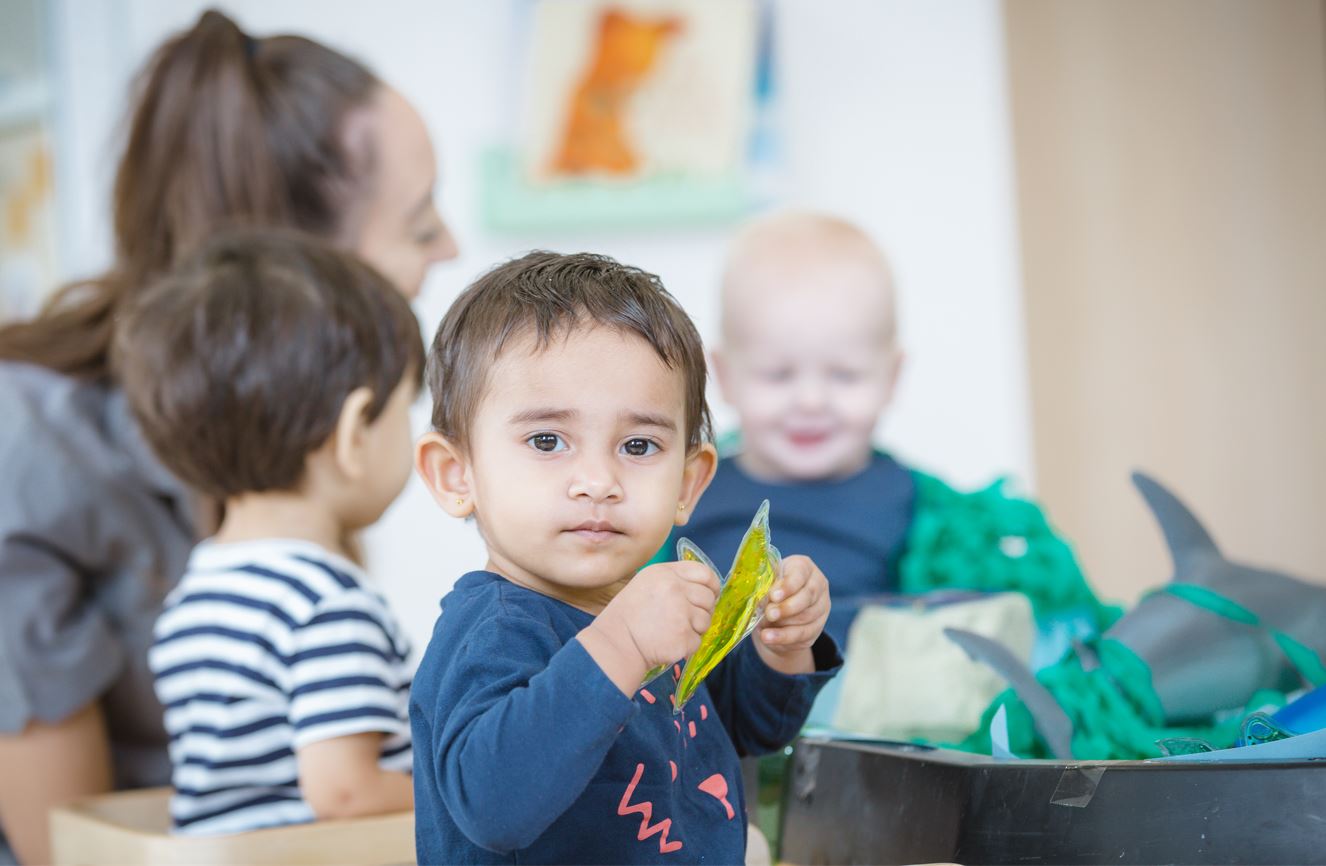
This month we are learning about emotions as part of World Emoji Day. Emotions are a certainly a rollercoaster in the first five years of a child’s life, but once children develop emotional regulation skills, this supports their wellbeing for a lifetime.
Young children experience BIG emotions while their brains are developing, and they are not always able to calm themselves to react and behave appropriately. It is very normal to see tantrums in a 2-year-old who has dropped their cupcake on the floor, or a 3-year-old who has had another child take their toy. However, by 4-5 years we expect children to start to internally control their emotions and manage their behaviour rather than always have meltdowns and outbursts.
Emotional self-regulation is a child’s ability to recognise and manage their emotions and behaviour in line with the situation they are in. For example, a child who feels frustrated that they didn’t win a game but shrugs it off and walks away rather than having a tantrum represents a child who has some emotional self-regulation skills in place. Children need to learn these skills to cope with the world and their feelings.
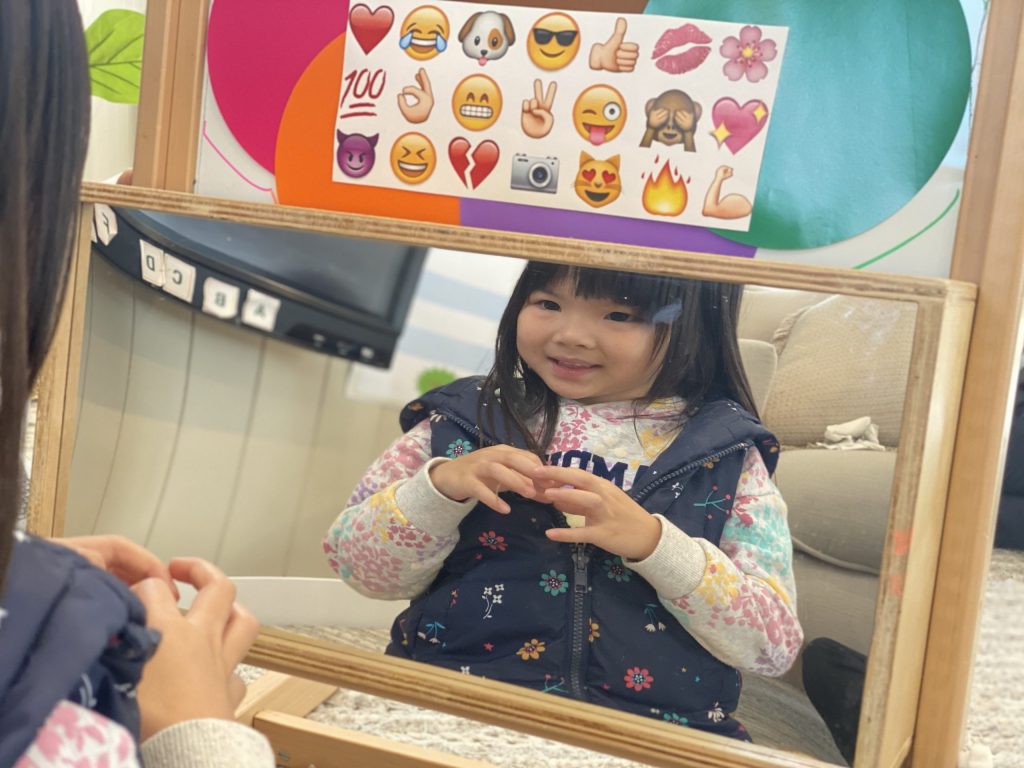
Parents and educators have key roles to play in helping children to recognise their own emotions, and to choose the right behaviour. Rather than thinking of an outburst as bad behaviour, think of it as a skill that you need to help your child to learn. Some ideas for how to do this are:
- Describe the emotion they are displaying with an emotion word (e.g. ‘upset’, ‘cross’, ‘excited’, ‘worried’). This lets your child know that you understand how they are feeling and helps to connect them with that feeling, e.g. “I can see you are frustrated”; or “That must have hurt, I can see you’re upset”.
- Provide comfort when your child is upset, before trying to teach the right response. Children who are upset are stressed; their brain cannot think rationally during this state. Calming your child’s brain through comfort like a hug, a calm facial expression and voice, or moving to a quiet space allows your child to lower their stress response.
- Do not use too many words – when children are stressed and having an outburst, they are not using their ‘thinking brain’, they have reverted to their emotional brain which is not rational. Wait a little while and talk it through when they have calmed down.
- Once your child is calm, try to teach better choices and behaviours in response to situations. Paint a picture of the behaviour you want to see, e.g. “when we open the door I need you to hold my hand so you’re safe in the carpark”; “when the song finishes we need you to sit on the rug”; “when your sister takes your toys say ‘don’t do that’ rather than hitting her”. You may need to repeat this training many many times before your child learns the new behaviour!
- Set good examples of emotional regulation by managing your own emotions in front of your children. Model coping strategies such as “I’m taking some deep breaths to calm down because that has made me very cross”.
- Teach empathy when your child is calm and regulated. If you see another person who is experiencing a big emotion, talk to your child about how that person is feeling and why, e.g. “He is very excited because he hasn’t seen his dad all week”; “She is frustrated because she can’t climb the ladder by herself”; “He is upset because he dropped his ice-cream”.
- Allow your child opportunities to practice self-regulation by letting them have experiences that challenge them. Try not to always jump in and solve the problem for them. For example, at the park let your child try to manage when someone else pushes in front him, then teach him the words he could say for next time. If your child is having difficulty sharing a toy, don’t rush out and find/buy another toy for the other child; instead teach her that she can look for a different toy while waiting for her turn.
If you are interested in learning more about how the brain develops in early childhood and impacts on behaviour you might like to read about the Triune Brain Model:
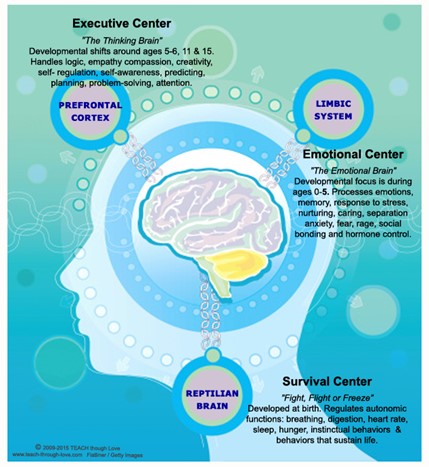
Reptilian Brain – Survival Centre: “Fight, Flight or Freeze”
The most primal level resides at the bottom of the brain and deals with survival, handling basic instincts and functions. Infants operate from this survival centre and are unable to regulate their own systems, being easily set off by light, touch, noise, or being alone. They must rely on caregivers who are consciously connected to soothe them. It is not a ‘thinking’ part of the brain. Older children often revert back to using this reptilian brain when stressed.
Mid-brain – Limbic/Emotional Centre: “The Emotional Brain”
The second tier/mid-brain deals with primary emotions such as happiness, fear, sadness and anger. At the centre of the brain, it contains the amygdala and the hippocampus. This area is the seat of emotions and is the focus of development in early childhood years. 2-3 year old children are operating primarily from this emotional brain. Self-expression, communication of needs and reactions to the world are expressed in the form of feelings (sometimes big ones!) which flow from this part of the brain. They have not yet developed the thinking brain to understand consequences and reasoning.
Pre-frontal Cortex – Executive Centre: “The Thinking Brain”
The uppermost tier is the higher brain and is involved in decision making. It is the last area of the brain to develop, at around 5 years, and continues developing until adulthood. It is responsible for rational thought, problem-solving, planning, attention, self-awareness and understanding emotions. Children easily disconnect from their cognitive brain when they perceive threats or are stressed.

